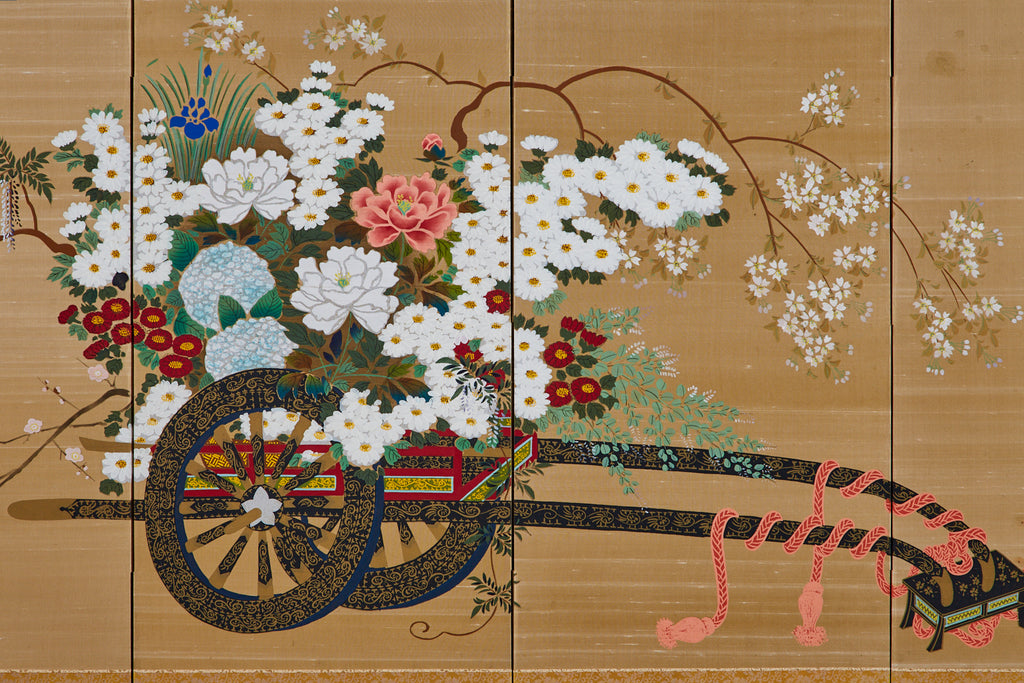Japanese Symbolism of the Flower Cart (花車, Hanaguruma) Motif

In traditional Japanese textiles, the flower cart (花車, hanaguruma) motif holds deep symbolic significance, often representing elegance, prosperity, and seasonal beauty.
• Seasonal beauty and harmony with nature: The flower cart is typically depicted overflowing with seasonal flowers, showcasing the harmony and appreciation of nature’s cycles. It emphasizes the fleeting beauty of the seasons, a key concept in Japanese aesthetics.
• Elegance and refinement: In historical Japan, flower carts were associated with the aristocracy and the Imperial Court, where flower arranging (ikebana) and appreciation for floral displays were highly regarded as refined arts. The motif often implies sophistication and a connection to the elite cultural practices of the time.
• Prosperity and celebration: The abundance of flowers in the cart can symbolize wealth, good fortune, and happiness. The cart itself, filled with blooming flowers, can also be seen as a symbol of a bountiful life.
• Romantic connotations: The beauty of the flowers in full bloom also suggests love, romance, and poetic ideals, particularly in the context of classical courtship traditions.
Overall, the flower cart motif in Japanese textiles reflects a rich connection to natural beauty, cultural refinement, and the prosperity associated with traditional celebrations.
